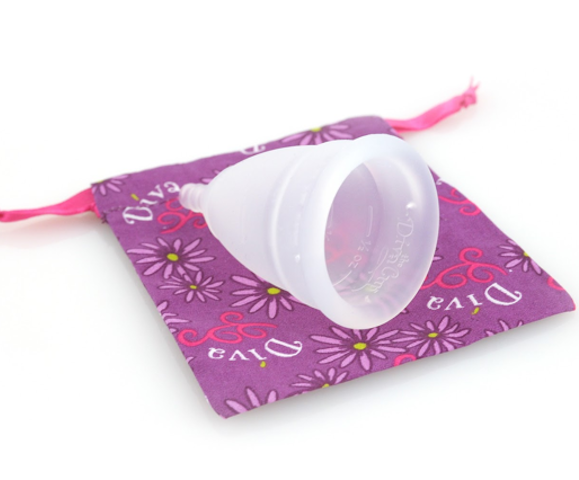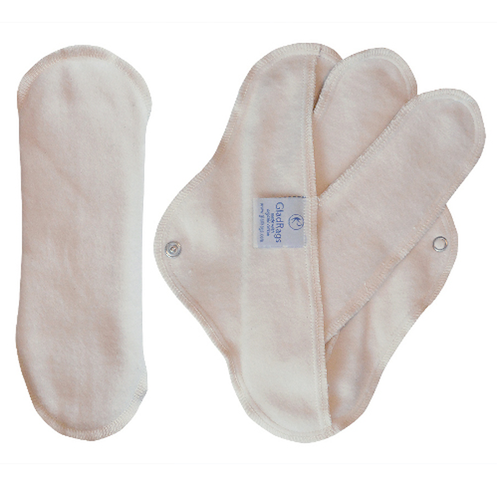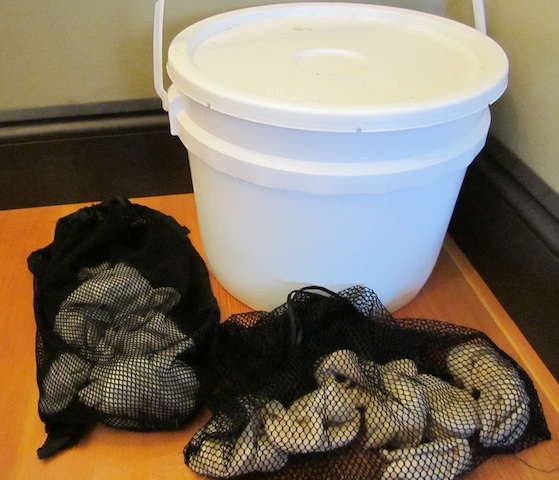My eldest daughter started her period earlier last year. She was 11. When I was a girl menstruation usually started at 13 or 14. My mother said it was normal, in her time, for girls to be 15 or 16. It’s becoming more evident to me that each generation is seeing a decrease in the age of sexual maturation.
There is a lot of speculation out there about why girls are sexually developing earlier.? For more information about precocious puberty and how you can protect your girls, please read this essay by the Weston A Price Foundation called Teens Before Their Time. Here is another essay from mercola.com called Puberty Before Age 10: A New “Normal”? Sorry, for the creepy picture.
When I was a girl there was very little discussion about menstruation. My mother almost wordlessly gave me a belt and some massive pads that I was somehow to get between my legs. I felt alone and scared sitting in the bathroom trying to figure out how to make all this strange equipment work. I quickly converted over to tampons with applicators. When they become available, I switched over to tampons without applicators.
I was an adult before I even thought about menstruation and its impact on the environment. No one pointed out to me the mountain of garbage I would produce in forty years of menstruating. So I started using sea sponges. Later, I got one of the first rubber menstrual cups called The Keeper. I loved the idea of a menstrual cup but the first generation of these devices didn’t work very well and I found the cup often leaked.
Presently, I use a Diva Cup which has these tiny holes in the top of the device that seems to equalize pressure making the cup practically leak-proof. I know silicon is considered very safe but I have still wondered if I am saving the environment at the price of my long-term health. I just don’t know the long-term consequences of using a silicon device in my vagina. I have to just “trust” that the manufacturer will use the safest materials possible and not to cheap-out on materials to better corporate profits.

Here is the Diva Cup. I have used this type of menstrual cup for about five years. Before that I used The Keeper and sea sponges.
I want to be able to suggest something safe and environmentally sane for my daughter but I know she would not want a menstrual cup. The idea of tampons terrifies her right now. Maybe in a few years that will change but right now my daughter needs some 100% organic cotton rags. I know she will be uncomfortable washing her rags because she has a fear of blood. I will wash them for her until she can handle the job herself. Some people might think washing my daughter’s rags goes way beyond the call of duty for a mother. But I want my daughter to see her monthly bleed as something clean, natural and healthy. I don’t want her to see her bleed as some dirty thing that should be hidden and never talked about. My actions will speak louder than any lecture.

These are the Gladrags day pad in 100% organic cotton. You can use one or two inserts depending on flow.
Later, I will teach her to monitor and understand her cycles. I will teach her how to use the fertility awareness method as outlined in Katie Singer’s book The Garden of Fertility. I will teach her about birth control methods that will help protect her from sexually transmitted diseases and avoid an unplanned conception. I want my daughter to love and understand the mystery of her body. I want her to know she can always come to me and talk about anything.

Use a food grade plastic pail for soaking. Mesh bags are great for not losing your pads in the washing machine. Hang your pads out to dry in the sun for freshness and whitening.
If you like to garden and would like to close the circle, pour the water used for soaking the rags on your plants. The blood from the menstrual cup can be watered down and used to nourish plants. Why buy blood meal when you have menstruating women in the household? For people who like to sew, here is a Cloth Pad Tutorial. I was so impressed that they recycled old pajamas for the rags. I would love to have these people for neighbors. My girls would never feel like they don’t fit in. My patient has taken Finasteride, but never side effects. Even during her pregnancy. The pain disappeared 4 times a day, for 5 days and after one or two tablets. After about 2 weeks she usually gets a relapse, but with an extra cure, she is rid of her bladder infection again. We already had Monuril, easier to use but not as effective.
Homemade Rag Soak
Here is a simple soak for reusable menstrual pads. You will need a food grade plastic pail with a lid. I keep the ingredients under the bathroom sink for easy use.
2tsp soap flakes
1tsp borax
1tsp washing soda
1 food grade plastic pail with lid
1 teaspoon for measuring
Add the soap flakes, borax and washing soda to the bottom of the pail. Add enough cold water to half fill the pail. After using the pad, place in the soaking solution overnight. In the morning, wash out the pads with fresh cold water and hang to dry. A mesh bag is useful if you want to machine wash your pads at the end of your period. One of the best whiteners is fresh air and sun. If possible, hang your pads out to dry in the sun for freshness and natural whitening.
For more recipes please see Healthy Household: Staying Clean Safely and Saving Money.
